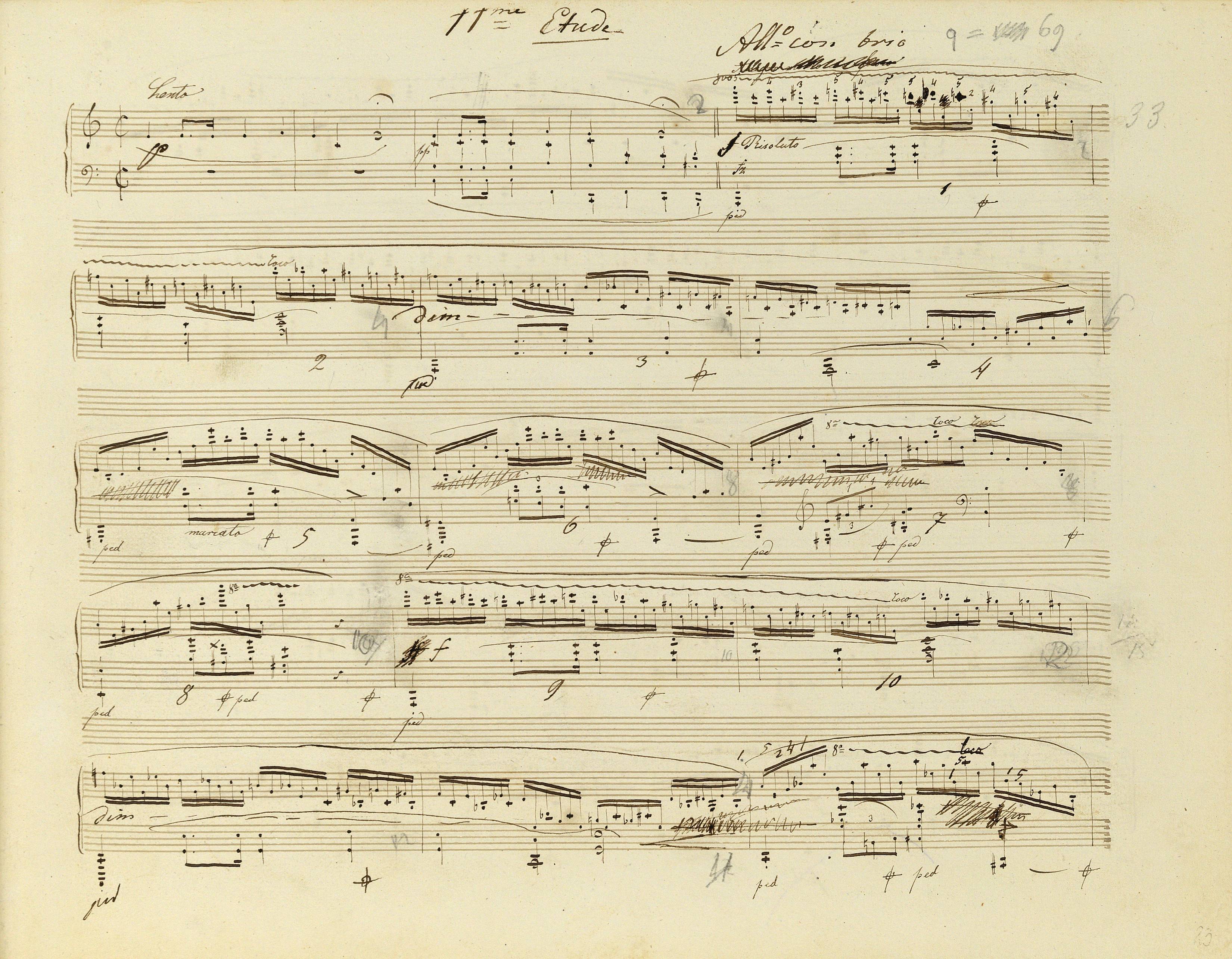Op. 2, Variations in B♭ major
Op. 10, 12 Etudes
Op. 11, Concerto in E minor
Op. 21, Concerto in F minor
Op. 22, Polonaise in E♭ major
Op. 24, 4 Mazurkas
Op. 25, 12 Etudes
Op. 26, 2 Polonaises
Op. 27, 2 Nocturnes
Op. 28, 24 Preludes
Op. 30, 4 Mazurkas
Op. 35, Sonata in B♭ minor
Op. 50, 3 Mazurkas
Op. 63, 3 Mazurkas
Op. 64, 3 Waltzes
(Op. 4), Sonata in C minor




Op. 25 No 11, Etude in A minor
In the 2nd half of the bar, the only accidental in the part of the R.H. in GC, FE and EE1 is a  raising d3 to d
raising d3 to d 3. The notation, although inaccurate, determines also the sound of the 6th and 10th semiquavers in the 2nd half of the bar as d
3. The notation, although inaccurate, determines also the sound of the 6th and 10th semiquavers in the 2nd half of the bar as d 2 and d
2 and d 1. In turn, nothing indicates raising the 3rd, 7th and 11th semiquavers, which, in this situation, should read f3, f2 and f1. This version, however, is impossible in this melodic and harmonic context – the use of g
1. In turn, nothing indicates raising the 3rd, 7th and 11th semiquavers, which, in this situation, should read f3, f2 and f1. This version, however, is impossible in this melodic and harmonic context – the use of g as delay of the fifth of the B7 chord requires f
as delay of the fifth of the B7 chord requires f (possibly f
(possibly f ) as resolution. The sharps raising the discussed notes to f
) as resolution. The sharps raising the discussed notes to f 3, f
3, f 2 and f
2 and f 1 were added in GE and later EE (in EE2 without
1 were added in GE and later EE (in EE2 without  before the 11th semiquaver). Cf. bar 75.
before the 11th semiquaver). Cf. bar 75.
Compare the passage in the sources »
category imprint: Interpretations within context; Differences between sources; Editorial revisions
issues: EE revisions, Errors in FE, Errors in EE, GE revisions, Omission of current key accidentals, Errors of GC
notation: Pitch

